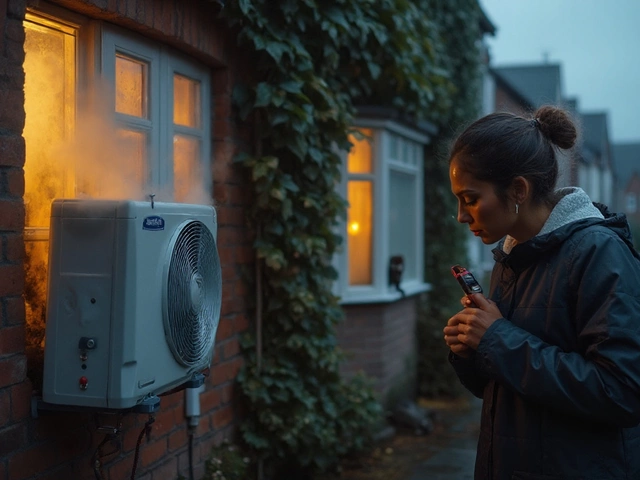How to Tell If Your Heat Pump Needs Replacing (Signs, Costs, Repair vs Replace)
September 13 2025DIY Oven Replacement: Costs, Risks, and When to Call a Pro
When you’re dealing with a broken oven, the idea of a DIY oven replacement, a homeowner-installed upgrade or swap of a built-in cooking appliance. Also known as oven installation, it can seem like a straightforward way to save money and get your kitchen back on track. But here’s the truth: not all oven repairs are created equal. Some fixes are simple—like swapping out a heating element, the coil inside an electric oven that generates heat. Also known as oven element, it’s the most common part to fail and often easy to replace. Others? Not so much. Replacing the whole oven involves gas lines, electrical circuits, ventilation, and structural mounting. Mess up one thing, and you’re looking at a fire hazard, a gas leak, or a voided warranty.
Most people don’t realize that electric oven repair, the process of diagnosing and fixing faults in a non-gas oven, typically involving electrical components. Also known as oven troubleshooting, it’s a common task homeowners attempt is totally different from replacing an entire unit. Replacing the heating element? That’s doable with a screwdriver and a little patience. Replacing the whole oven? That’s a job for a certified engineer. Why? Because your oven connects to your home’s electrical system, and if it’s gas-powered, it’s also tied to your gas line. Gas leaks don’t wait for weekends. Electrical faults don’t care if you’re handy. One wrong move and you’re not just out a few hundred pounds—you’re risking your whole home.
And let’s talk cost. You might think DIY saves cash, but when you factor in the cost of a new oven, tools you don’t own, time lost, and the risk of damaging your kitchen cabinetry or flooring, it adds up fast. A professional installation includes safety checks, gas pressure tests, and compliance with UK regulations. That’s worth more than the labor charge. Plus, if you install it yourself and something goes wrong later, your home insurance might not cover it. Certified engineers don’t just install—they verify. They test for gas leaks, check ventilation, ensure proper grounding, and confirm the unit meets safety standards.
So what can you actually do yourself? If your oven isn’t heating, check the oven heating element, the internal coil that glows red-hot to cook food. Also known as bake element, it’s often the culprit. If it’s broken, replace it. If the oven won’t turn on, check the breaker. If the door seal is cracked, swap it out. But if you’re pulling out the whole unit, disconnecting gas or hardwired power, or moving the appliance into a new space—you’re past DIY territory.
The posts below cover everything from fixing a broken heating element to understanding why replacing your oven isn’t like swapping a lightbulb. You’ll find real cost breakdowns, step-by-step safety checks, and clear advice on when to stop and call a pro. No fluff. No guesswork. Just what you need to decide—safely and smartly—whether to tackle it yourself or leave it to the experts.
 8 Nov
8 Nov
Can You Replace an Electric Oven Yourself? Step-by-Step Safety Guide
Replacing an electric oven yourself is possible with the right tools and safety steps. Learn how to safely remove the old unit, connect wiring, install the new oven, and avoid common mistakes that could lead to electrical hazards.
Read More...



